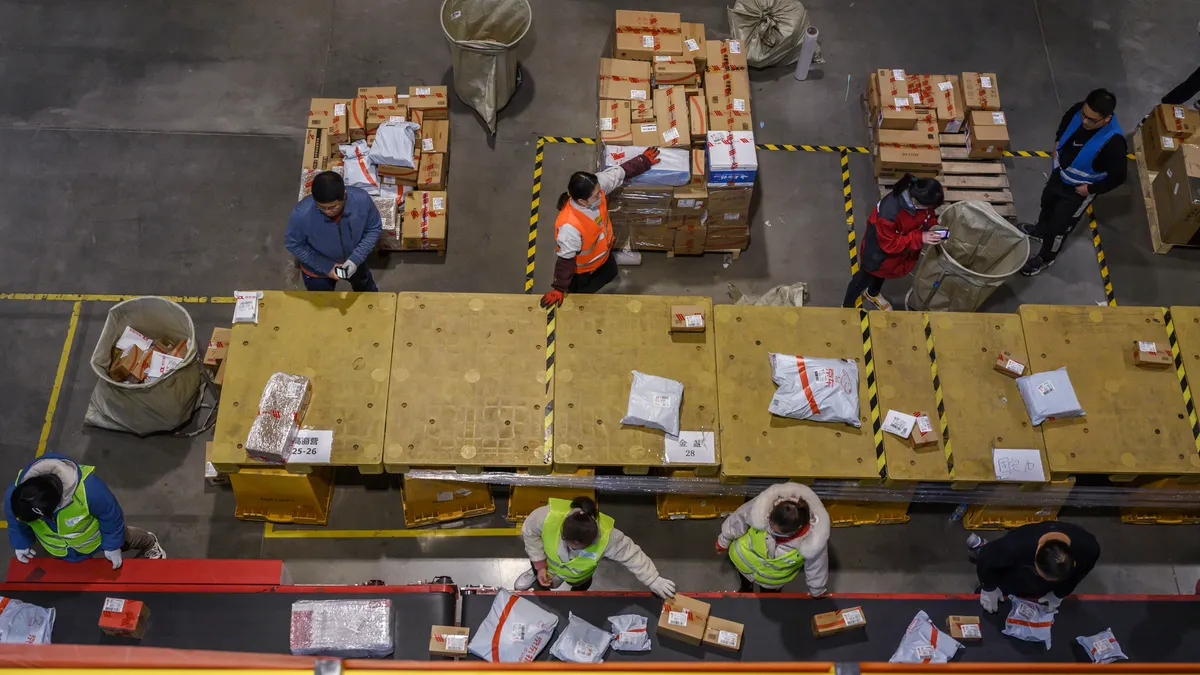Dive Brief:
- JD.com is involving more brick-and-mortar retailers in its omnichannel fulfillment strategy and expanding its warehouse footprint as the company places a greater emphasis on supply chain services, executives said on the company's Q2 earnings call.
- The company's omnichannel business has grown to cover "millions of brick-and-mortar merchants," said Lei Xu, CEO of JD Retail. JD.com is sharing some of its gross profit with these merchants, "but at the same time, it helps us save the fulfillment costs," said Sandy Xu, CFO of JD.com.
- "I want to emphasize that we believe cost efficiency and customer experience are always the key to the long-term success of the retail industry, which translates into the supply chain and logistics capabilities, rather than merely competing through subsidies to expand scale at whatever cost," Sandy Xu said.
JD.com's warehouse footprint more than quintuples in 5 years
Dive Insight:
JD, known for its e-commerce offerings in China, is part of a growing number of companies leveraging inventory at brick-and-mortar stores to fulfill online orders.
Retail stores worldwide are on track to use one-third of their space for online order fulfillment by 2023, according to research from Edge by Ascential. Target has used its stores in this way for years, which gave it an advantage early on in the COVID-19 pandemic as foot traffic plummeted and inventory sat in retailers' stores.
JD's omnichannel fulfillment program matches a customer order with the store holding the product "closest to the customer in real-time, and then arranges for a courier to deliver to the consumer along the most efficient route," according to a 2020 article on the company's website. This expands JD's fulfillment options beyond what is currently in stock at their warehouses.
The goal of JD's omnichannel strategy is "to break the glass ceiling for JD's long-term growth," Lei Xu said, and the company's supply chain capabilities are front and center in that transformation.
Prior to this quarter, JD would call itself "China's leading technology driven e-commerce company" on quarterly earnings reports. Now, it calls itself "a leading supply chain-based technology and service provider."
"We can synergize with suppliers and partners to effectively meet the customer's needs that ... cannot be matched by a purely online platform or B2C model," Lei Xu said.
But warehouses are still a vital element in JD's fulfillment formula, and its footprint is growing fast. JD Logistics now operates 1,200 warehouses covering about 250 million square feet, compared to 750 warehouses with 194 million square feet last year. It's delivery network is improving, too.
"JD Logistics further strengthened its cross regional highway, railway and air cargo network to enhance its next-morning and next-day delivery service," JD said in its earnings release. "As of June 30, 2021, JD Logistics had over 1,000 air cargo routes and the ability to utilize over 300 railway routes."
JD is focused on building its supply chain capabilities further in regions where order density and efficiency can increase, Sandy Xu said.
Better logistics capabilities benefits other companies under the JD umbrella. JD Logistics and JD Health have partnered to establish cold chain capabilities covering more than 100 cities in China, according to JD's earnings release. This will allow JD Pharmacy to expand its business into drugs for rare diseases, it added.
"So we believe going forward, JD is a new type of real economy-based enterprise with revenue mainly coming from retail and logistic business, as well as supply chain-related service fees," Sandy Xu said.
This story was first published in our weekly newsletter, Supply Chain Dive: Operations. Sign up here.















